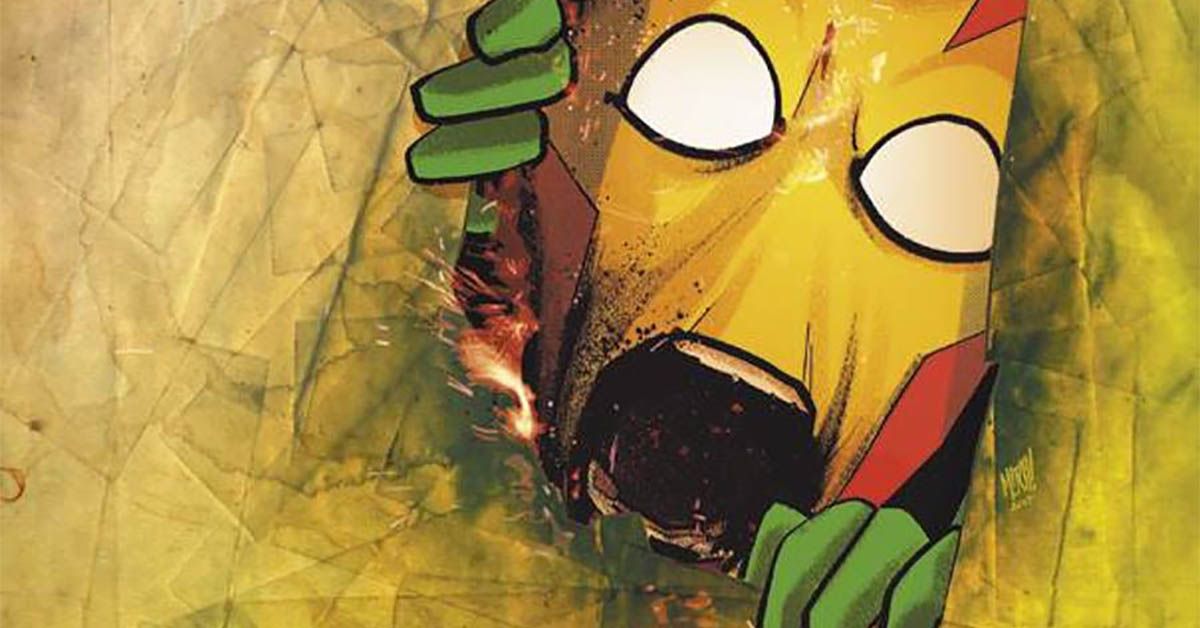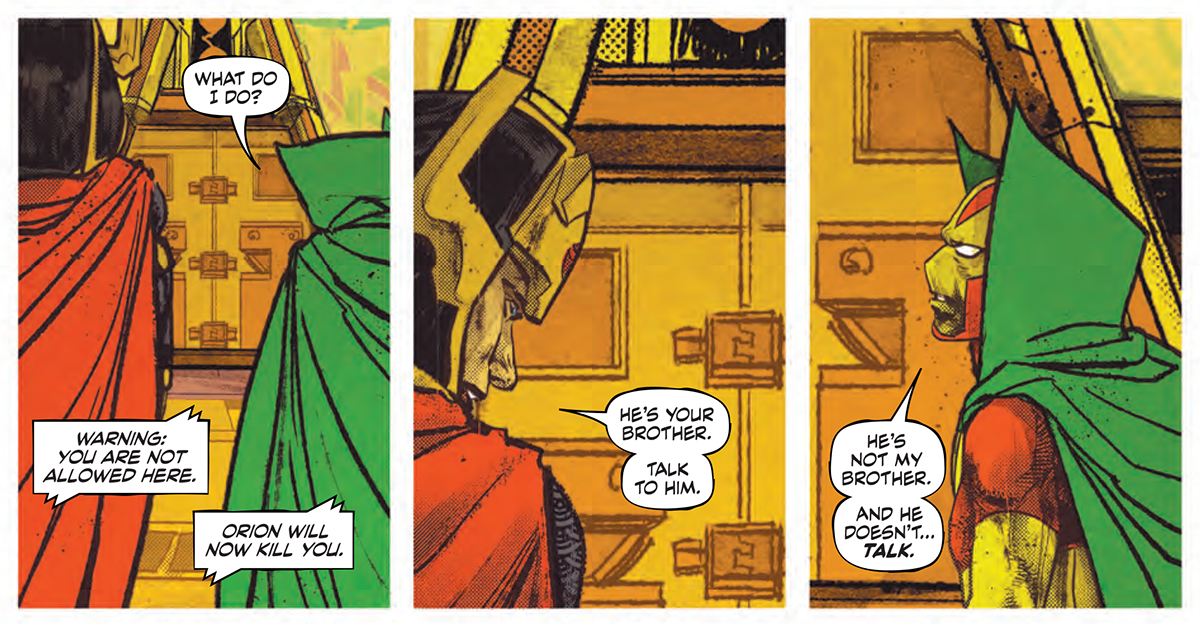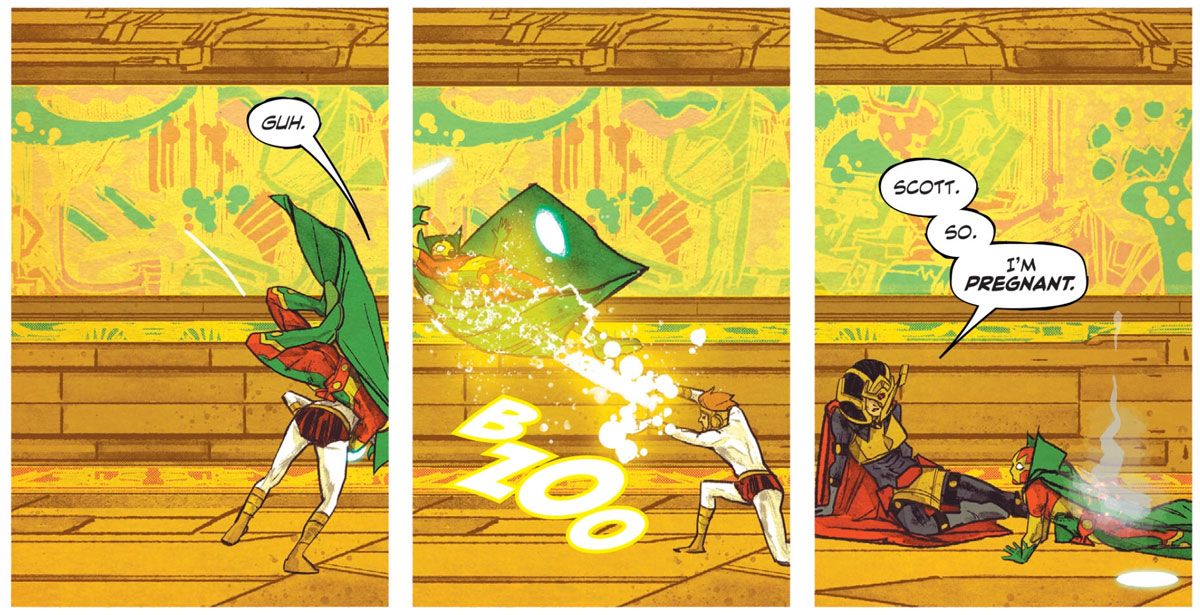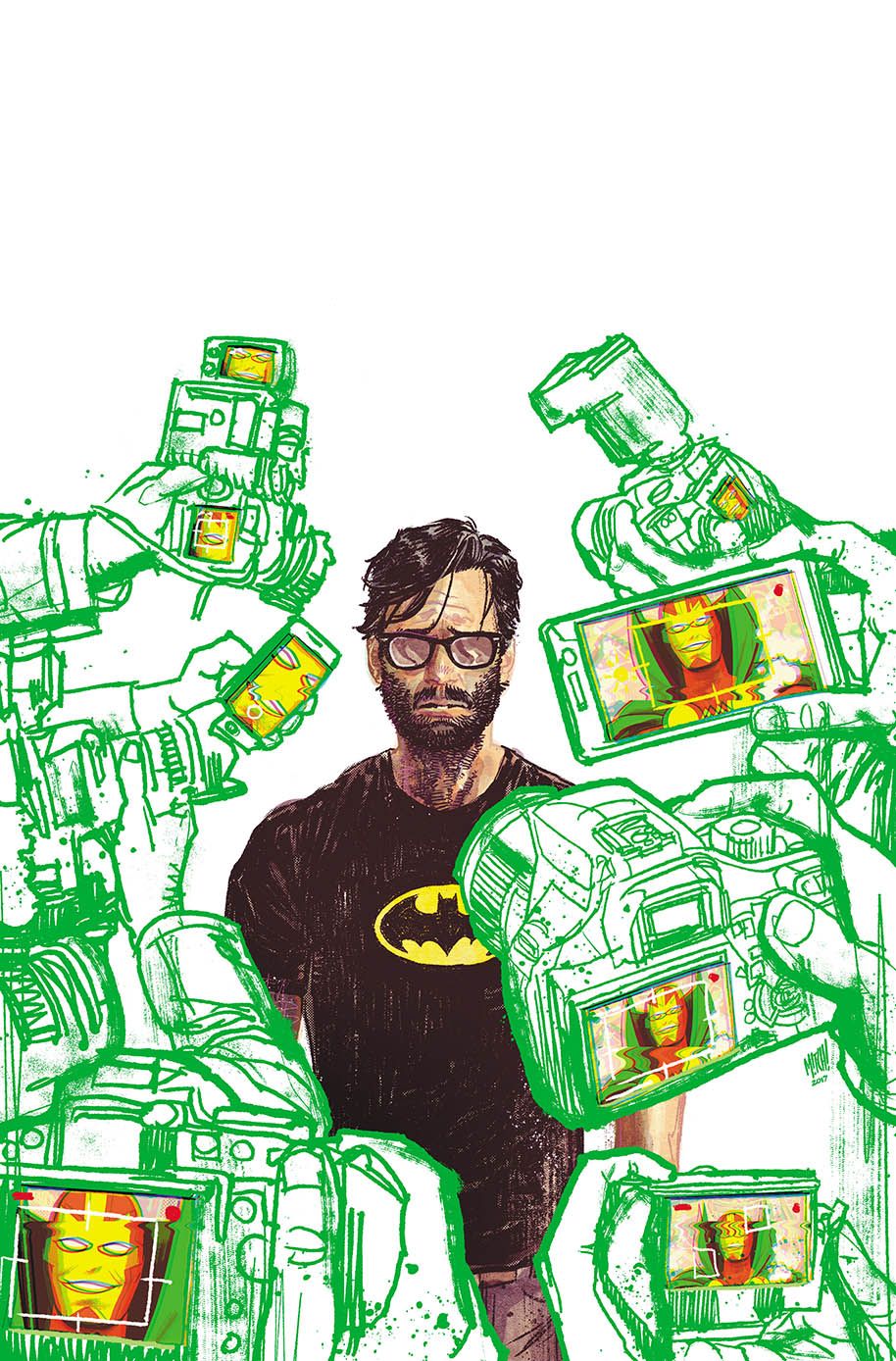CBR sat down with the artist from the Mister Miracle dream team, Mitch Gerads, at this year's Emerald City Comic Con in Seattle. Gerads spoke to some of the more technical aspects of the fan-favorite book, and took a deep-dive into the personality of Scott Free.
CBR: So I've spoken to [series writer] Tom [King] about this book a few times but this is my first time talking to you about it! Let's hear your side of the creative process here -- can you talk about how you get the, for lack of a better word, "cadence" of the story as you and Tom collaborate? I want to hear your side of those nine-panel grid pages.
Mitch Gerads: Yeah! I don't know if that's something I learned or something that's just been programmed in me or what, but I absolutely love the nine-panel grid, and I think I instantly get what Tom is trying to do with the nine-panel grid. I remember turning in my first grid page on Sheriff of Babylon and [King] wrote me, "Dude, this is exactly what I've been looking for that no other artist has pulled off," so of course I was like, "Awesome!" [Laughs]
But yeah, the nine-panel grid is awesome because people think it's so restricting, but because it's so restricting, it allows you to be almost more creative. You don't have to fight the reader. When a reader looks at a normal page that's laid out however, psychologically there's a little bit of strain in their brain. The reader has to figure out where to go and what to read. But with a nine-panel grid, you know it goes right to left, boom-boom-boom, that's how your eye is always going to read it. So you don't have to worry about the reader having a problem with that, so you can start doing things like playing with time, playing with jokes -- it's like a newspaper strip, there's the set up, the middle, then the punchline.
RELATED: How Tom King & Mitch Gerads’ Darkseid Lives Up To Jack Kirby’s Vision
So speaking about punchlines, one of the parts of Mister Miracle I don't see talked about all that frequently is just how funny the book is. How do you balance those gags with the rest of the story that is ostensibly about an extreme level of trauma, in a way that doesn't make it seem frivolous or corny?
The thing is, nobody is humorless -- and the people who are are just boring, and you don't really want want to talk to them, you don't really care to hear their story. For Scott, the humor is a coping mechanism -- he's always been portrayed as this happy-go-lucky guy. So in true King/Gerads fashion, we look at him and are like, "...so what's wrong with him?"
So you look at his childhood and realize how messed up it is -- so he's portrayed as this happy-go-lucky guy because he's compensating for this torture he's endured for his whole life. But in our book, all that stress he's been tamping down is all starting to boil to the top.
Like all people, Scott's complex. He's not just one sided, and he's going through some stuff but he's trying not to let it break him. It hasn't broken him yet, even though he's definitely cracking. That's just how we keep it interesting -- if you're always humorless, if you're doing a Dark Book and all you focus on is doing a Dark Book... nobody cares about that. There has to be something in it. Tom and I don't care to tell stories about "characters," we care to tell stories about people, and people are unique and complex and that's all stuff we want to talk about.
Page 2: [valnet-url-page page=2 paginated=0 text='Depicting violence, redesigning the Female Furies']
Now, on the opposite end of the spectrum, you spoke a bit in your panel at the DC in DC event about the place of violence in your comics and I was wondering if you could talk about the way you handle the cape-and-cowl based violence in Mister Miracle versus the very real-world violence in Sheriff of Babylon -- does that context make a difference for you?
I really have no problem with violence or portraying violence, but I also want to portray it in a way that feels real and that it sticks with you -- whether it's warranted or not. That's kind of been my approach on any book I do -- I definitely don't want to stray away from that. Even Batman punching a villain, I want people to see the aftermath there like, "Oh, that dude's jaw is broke, that's not cool, that's going to hurt for a while."
I find with my art that the more real I can get -- which isn't to say that I'm always super "real" -- but I think when readers see or feel "real," they grab on to it better. That's where I balance the grounded part with the crazy comic book-ness of Mister Miracle.
I try to get in the characters' heads for any situation, violent or not. I do photo references for everything, whether it's me or my wife or a friend or a cat. I would be a terrible actor, but when I'm at home I can get in these characters heads and I know how they would feel during whatever it is they're going through. I want people to see the feel of these things. I don't want them to see the outside, I want them to see the inside.
Switching gears to something maybe a little more lighthearted -- we just got a look at your designs for the Female Furies here and you've got some re-designing going on in there--
A little bit, yeah! For the most part I've done Jack's designs, just tweaked a little -- or sometimes not at all because he nailed it. Like Mister Miracle, he's the Kirby design but with the green runners down the pants because I knew I wanted to do something with the cape where he only wore it when he was performing or in like, a formal context. So I knew for a lot of the book, he wouldn't have the cape so I added the green to balance him out.
RELATED: Mister Miracle and Big Barda Are Our Comics Relationship Goals
Have you run into any issues with the camp of the characters designs colliding with the tone of the book?
No, no! I think that enhances everything, really. That's part of the fun. Especially with the Female Furies, I don't want to give too much away but, in the issue, the context in which they show up. You'll see the balance of these crazy over-the-top characters in this very mundane context, and that's super fun.
When Scott's in street clothes in the book, he's usually wearing a superhero shirt. Is that something you included in your designs as a gag or is that something you think says a bit about who Scott is as a person?
It's definitely a personality thing. I was thinking about Scott like, man, he would absolutely wear superhero shirts, both in an effort to be as suburban and normal as possible -- superhero shirts are just everywhere now, everyone is super into it. It's usually one shirt per issue but issue #8, coming up, that has like seven different superhero shirts. It's been so much fun picking them -- he's got a Nightwing shirt at one point -- it's a blast. And the whole time I'm doing the art I'm thinking "he's totally met Dick," it's so much fun.
RELATED: Best Comics of 2017: Mister Miracle is Bleak and Beautiful
Do you think that's something that his fellow heroes get on his case for? Or do they find Scott's superhero fandom endearing?
Hmmm, I don't know! I like to think that Scott is a character that the other heroes really respect. He's not too goofy, he's not like Beast Boy or anything like that, but he's someone who is very much around, they respect him even if he's not interacting with him too much. I hope they find it endearing. [Laughs]
Mister Miracle #7 is available on March 14 from DC Comics.




